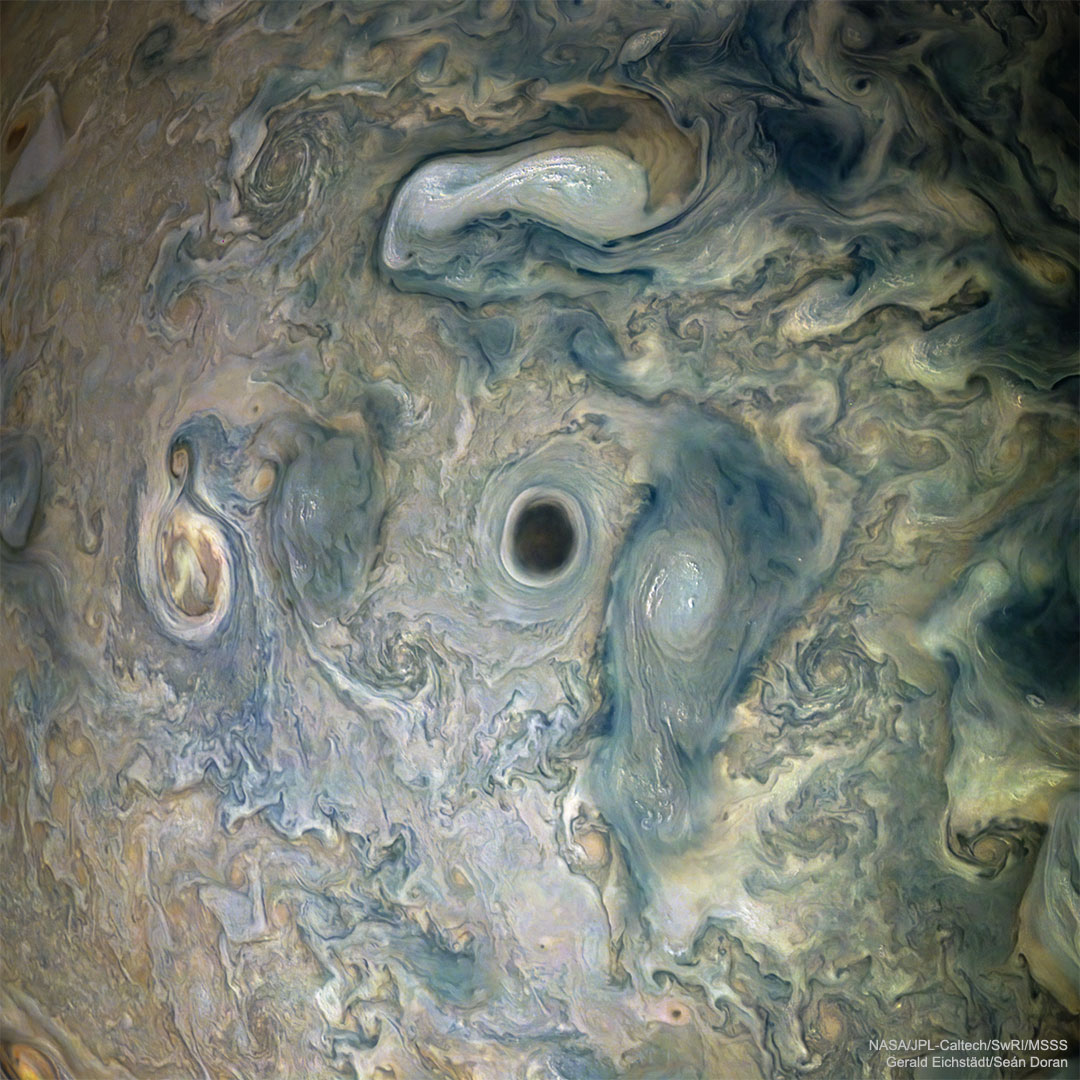Nombre total de pages vues
04/02/2025
SANTé/MEDECINE - Cancer colorectal - Traitement - 3/3 -
ASTRONOMY - Anticrepuscular Rays: A Rainbow Fan over Spain
2025 February 4
Image Credit & Copyright: Julene Eiguren
Explanation: Yes, but can your rainbow do this? Late in the day, the Sun set as usual toward the west. However, on this day, the more interesting display was 180 degrees around -- toward the east. There, not only was a rainbow visible, but an impressive display of anticrepuscular rays from the rainbow's center. In the featured image from Lekeitio in northern Spain, the Sun is behind the camera. The rainbow resulted from sunlight reflecting back from falling rain. Anticrepuscular rays result from sunlight, blocked by some clouds, going all the way around the sky, overhead, and appearing to converge on the opposite horizon -- an optical illusion. Rainbows by themselves can be exciting to see, and anticrepuscular rays a rare treat, but capturing them both together is even more unusual -- and can look both serene and surreal.
03/02/2025
ARCHEOLOGIE - Le trésor de Toutânkhamon - Une tête de félin sacré
SANTé/MEDECINE - Cancer colorectal - Causes - 2/3 -
ASTRONOMY - Wolf-Rayet Star 124: Stellar Wind Machine
2025 February 3
Image Credit: Hubble Legacy Archive, NASA, ESA; Processing & License: Judy Schmidt
Explanation: Some stars explode in slow motion. Rare, massive Wolf-Rayet stars are so tumultuous and hot that they are slowly disintegrating right before our telescopes. Glowing gas globs each typically over 30 times more massive than the Earth are being expelled by violent stellar winds. Wolf-Rayet star WR 124, visible near the featured image center and spanning six light years across, is thus creating the surrounding nebula known as M1-67. Details of why this star has been slowly blowing itself apart over the past 20,000 years remains a topic of research. WR 124 lies 15,000 light-years away towards the constellation of the Arrow (Sagitta). The fate of any given Wolf-Rayet star likely depends on how massive it is, but many are thought to end their lives with spectacular explosions such as supernovas or gamma-ray bursts.
02/02/2025
SANTé/MEDECINE - Le cancer colorectal - Symptomes - 1/3 -
AERONAUTIQUE - La grande épopée des ballons dirigeables - Futur : Dassault Systèmes et l’Air cruiseship concept, no limit
ASTRONOMY - Comet G3 ATLAS Disintegrates
Image Credit: Lionel Majzik
Explanation: What's happening to Comet G3 ATLAS? After passing near the Sun in mid-January, the head of the comet has become dimmer and dimmer. By late January, Comet C/2024 G3 (ATLAS) had become a headless wonder -- even though it continued to show impressive tails after sunset in the skies of Earth's Southern Hemisphere. Pictured are images of Comet G3 ATLAS on successive January nights taken from Río Hurtado, Chile. Clearly, the comet's head is brighter and more centrally condensed on the earlier days (left) than on later days (right). A key reason is likely that the comet's nucleus of ice and rock, at the head's center, has fragmented. Comet G3 ATLAS passed well inside the orbit of planet Mercury when at its solar closest, a distance that where heat destroys many comets. Some of comet G3 ATLAS' scattering remains will continue to orbit the Sun.
01/02/2025
SANTé/MEDECINE - Alimentation - - Il faut absolument éviter les crêpes industrielles - 3/3 -
ASTRONOMY - Jupiter Abyss
2024 November 3 Jupiter Abyss Image Credit: NASA , Juno , SwRI , MSSS ; Processing & License : Gerald Eichstädt & Sean Dor...

-
2022 September 26 All the Water on Planet Earth Illustration Credit: Jack Cook, Adam Nieman, Woods Hole Oceanographic Institution ; Data ...
-
2025 May 11 The Surface of Venus from Venera 14 Image Credit: Soviet Planetary Exploration Program , Venera 14 ; Processing & Copyri...









